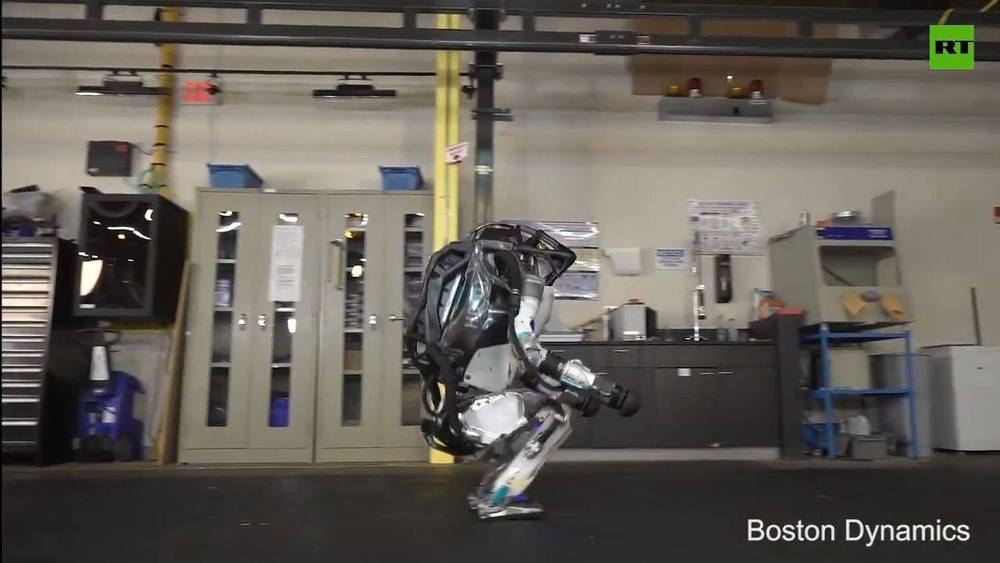Sep 24, 2019
Boston Dynamics showcases Atlas’ agility with gymnastics routine
Posted by Carse Peel in category: robotics/AI
A new twist on robotics.
New twist on robotics: Boston Dynamics showcases Atlas’ agility with gymnastics routine.

A new twist on robotics.
New twist on robotics: Boston Dynamics showcases Atlas’ agility with gymnastics routine.
D-Wave today announced its next generation “Advantage” quantum computer system. It’ll pack a whopping 5,000 qubits and myriad improvements to processing speed and power. And the Los Alamos National Laboratory in New Mexico will be among the first to have access.
According to a press release from D-Wave, the new Advantage system improves on the previous generation’s 2000Q model – which sports a paltry-by-comparison 2,048 qubits – in nearly every conceivable way:
Designed to speed the development of commercial quantum applications, the Advantage quantum system will power a new hardware and software platform that will accelerate and ease the delivery of quantum computing applications. Reflecting years of customer feedback, the platform captures users’ priorities and business requirements and will deliver significant performance gains and greater solution precision.
New research describes the case study of two people with psychotic conditions who benefited from an innovative treatment for psychosis.
A nanoelectrode array that can simultaneously obtain intracellular recordings from thousands of connected mammalian neurons in vitro.
How our brain cells, or neurons, use electrical signals to communicate and coordinate for higher brain function is one of the biggest questions in all of science.
For decades, researchers have used electrodes to listen in on and record these signals. The patch clamp electrode, an electrode in a thin glass tube, revolutionized neurobiology in the 1970’s with its ability to penetrate a neuron and to record quiet but telltale synaptic signals from inside the cell. But this tool lacks the ability to record a neuronal network; it can measure only about 10 cells in parallel.
Continue reading “Nanoelectrodes record thousands of connected mammalian neurons from inside” »
With metal organic frameworks.
The nonviral, bioinspired gene delivery method developed by researchers at RMIT University has proven effective in laboratory tests and is safer than standard viral approaches.
Widely considered the next frontier of cancer research, gene therapy involves introducing new genes into a patient’s cells to replace missing or malfunctioning ones that cause disease.
Continue reading “Nonviral gene therapy to speed up cancer research” »
Scientists at the University of Surrey have discovered that a natural antioxidant commonly found in green tea can help eliminate antibiotic resistant bacteria.
The study, published in the Journal of Medical Microbiology, found that epigallocatechin (EGCG) can restore the activity of aztreonam, an antibiotic commonly used to treat infections caused by the bacterial pathogen Pseudomonas aeruginosa.
P. aeruginosa is associated with serious respiratory tract and bloodstream infections and in recent years has become resistant to many major classes of antibiotics. Currently a combination of antibiotics is used to fight P. aeruginosa. However, these infections are becoming increasingly difficult to treat, as resistance to last line antibiotics is being observed.
Linear algebra is a field of mathematics that has been thoroughly investigated for many centuries, providing invaluable tools used not only in mathematics, but also across physics and engineering as well as many other fields. For years physicists have used important theorems in linear algebra to quickly calculate solutions to the most complicated problems.
This August, three theoretical physicists—Peter Denton, a scientist at Brookhaven National Laboratory and a scholar at Fermilab’s Neutrino Physics Center; Stephen Parke, theoretical physicist at Fermilab; and Xining Zhang, a University of Chicago graduate student working under Parke—turned the tables and, in the context of particle physics, discovered a fundamental identity in linear algebra.
The identity relates eigenvectors and eigenvalues in a direct way that hadn’t been previously recognized. Eigenvectors and eigenvalues are two important ways of reducing the properties of a matrix to their most basic components and have applications in many math, physics and real-world contexts, such as in analyzing vibrating systems and facial recognition programs. The eigenvectors identify the directions in which a transformation occurs, and the eigenvalues specify the amount of stretching or compressing that occurs.
NASA is pursuing a new space telescope tailored to spotting potentially hazardous asteroids.
An international team of scientists has figured out how to capture heat and turn it into electricity.
The discovery, published last week in the journal Science Advances, could create more efficient energy generation from heat in things like car exhaust, interplanetary space probes and industrial processes.
“Because of this discovery, we should be able to make more electrical energy out of heat than we do today,” said study co-author Joseph Heremans, professor of mechanical and aerospace engineering and Ohio Eminent Scholar in Nanotechnology at The Ohio State University. “It’s something that, until now, nobody thought was possible.”
